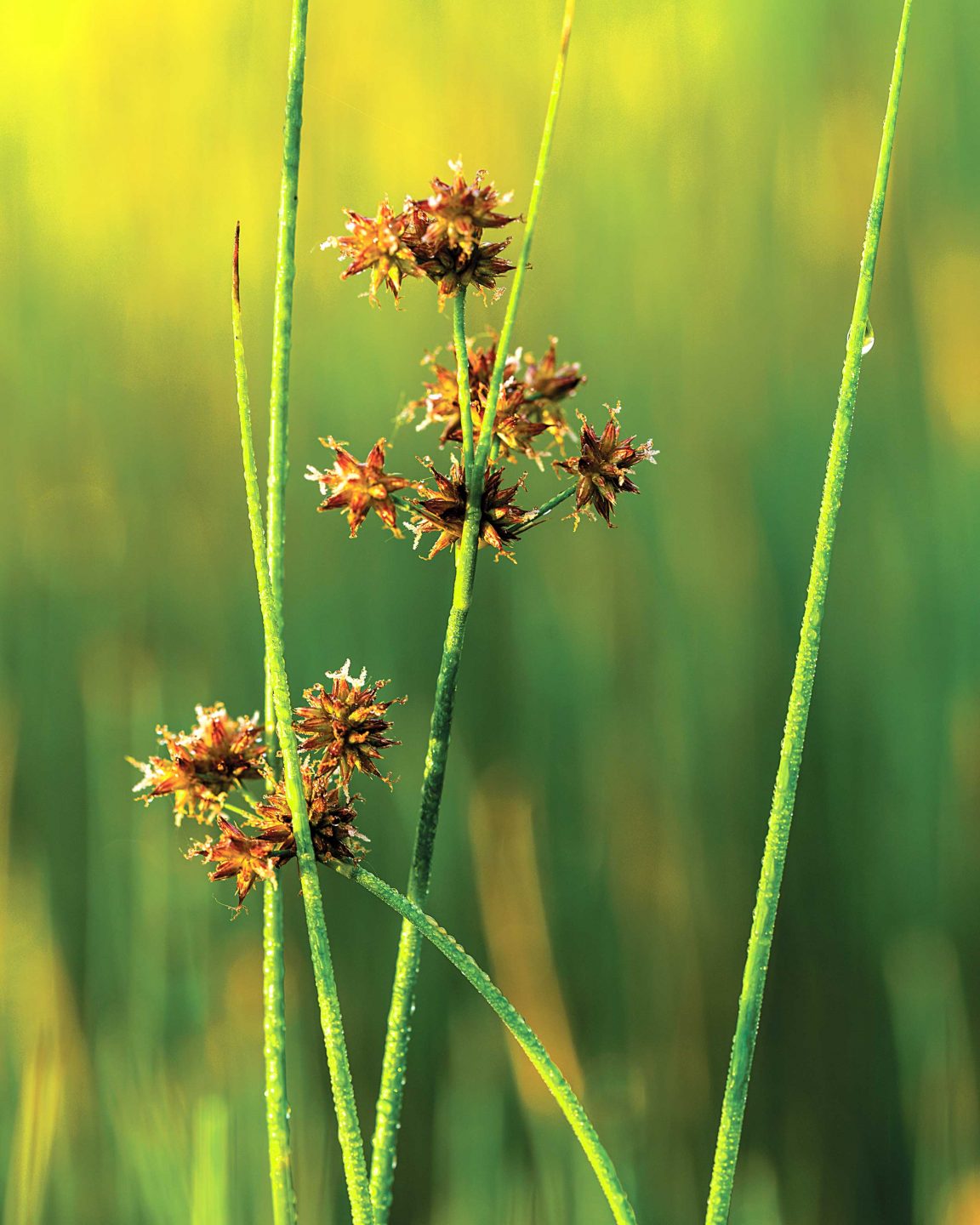
By Gerry Steinauer, Botanist
One June morning in 2021, Nebraskaland regional editor Eric Fowler and I explored an abandoned channel of the Elkhorn River on Red Wing Wildlife Management Area in Antelope County. Eric was taking photos and gathering material for an article about the historic 2019 flood and how it altered the river’s course along this stretch. I was there to help him understand the ongoing changes in the vegetation as the channel gradually transitioned from sandbar to marsh or woodland.
While Eric took advantage of the warm, early-morning sunlight to capture photos, my botanical eyes, and camera, were immediately drawn to the obscure rushes thriving on the channel’s sandbars. It was no coincidence that the flood we were investigating was responsible for the rush colonies.
Let me explain. When buried in sediment and shielded from the elements, tiny, nearly microscopic rush seeds can remain viable for decades. As floods have done for millennia, the churning waters of the 2019 flood tore down streambanks, scoured the streambed and carried away sediment, mainly sand, along with long-buried rush seeds and those of other plants. When the floodwaters receded and slowed, the sand and seeds settled across the floodplain.
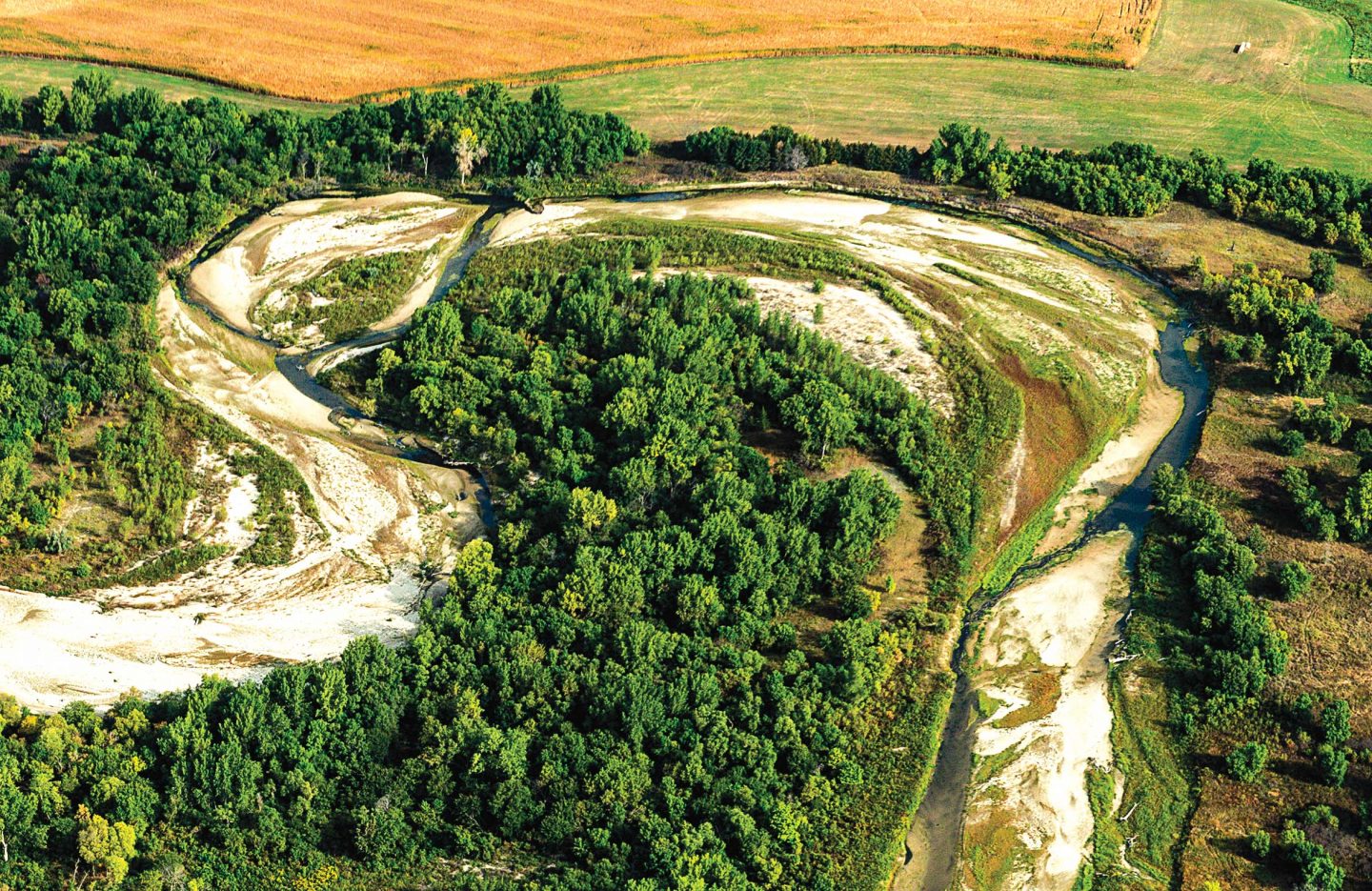
Of the millions of rush seeds carried by the floodwaters, some were fortunate. They landed on bare sand, warmed by the sun’s rays and moistened by groundwater or nearby pools and rivulets. Their long, dark, dormant wait was over, and they germinated. These reborn rushes were the ones I photographed.
What Is a Rush?
If an adventurous hiker had happened to pass by that morning as I knelt behind my camera, they might have assumed I was photographing grasses, given the grass-like appearance of rushes. However, the two plant groups differ in subtle yet distinct ways.
For example, in grasses, the male and female flower parts are protected by two bracts, while rush flowers are enclosed by six bracts that open as the flowers mature.
Additionally, each mature grass flower produces a single, relatively large seed, whereas each rush flower forms a pod containing dozens to hundreds of seeds.
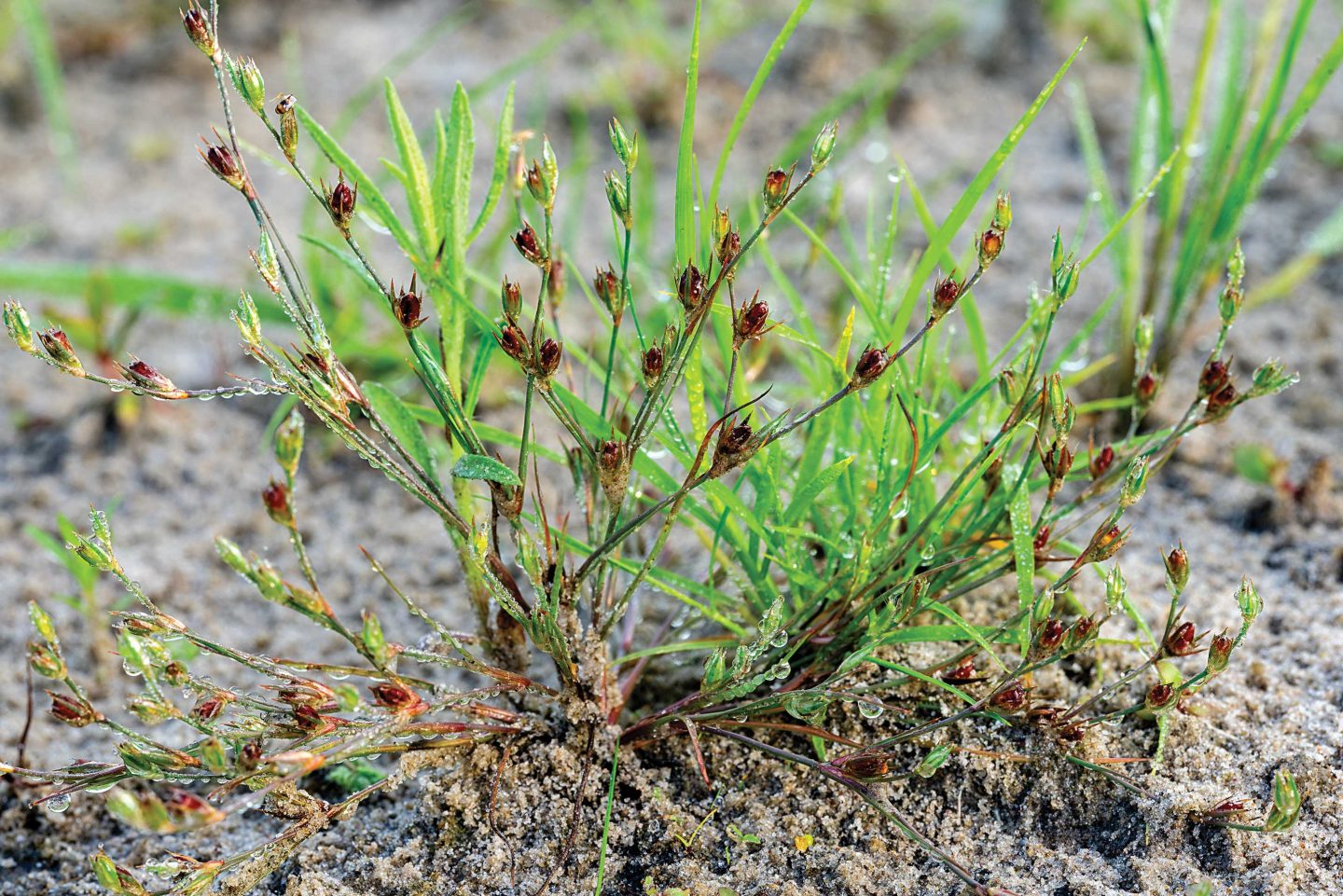
Furthermore, grass stems are round, hollow and contain nodes, swollen joints where the plants’ many leaves emerge. In contrast, rush stems are solid, lack nodes and are typically round, except in a few species where they are flat. Rushes have few leaves, most of which grow from the base of the plant.
To further complicate matters for plant enthusiasts, sedges closely resemble both rushes and grasses. However, they can be distinguished by a single bract that shields the flower parts, as well as solid, triangular stems that lack nodes. Fortunately, there is a simple rhyme to help discern these tricky plants:
Sedges have edges,
rushes are round,
and grasses have nodes
from the top to the ground.
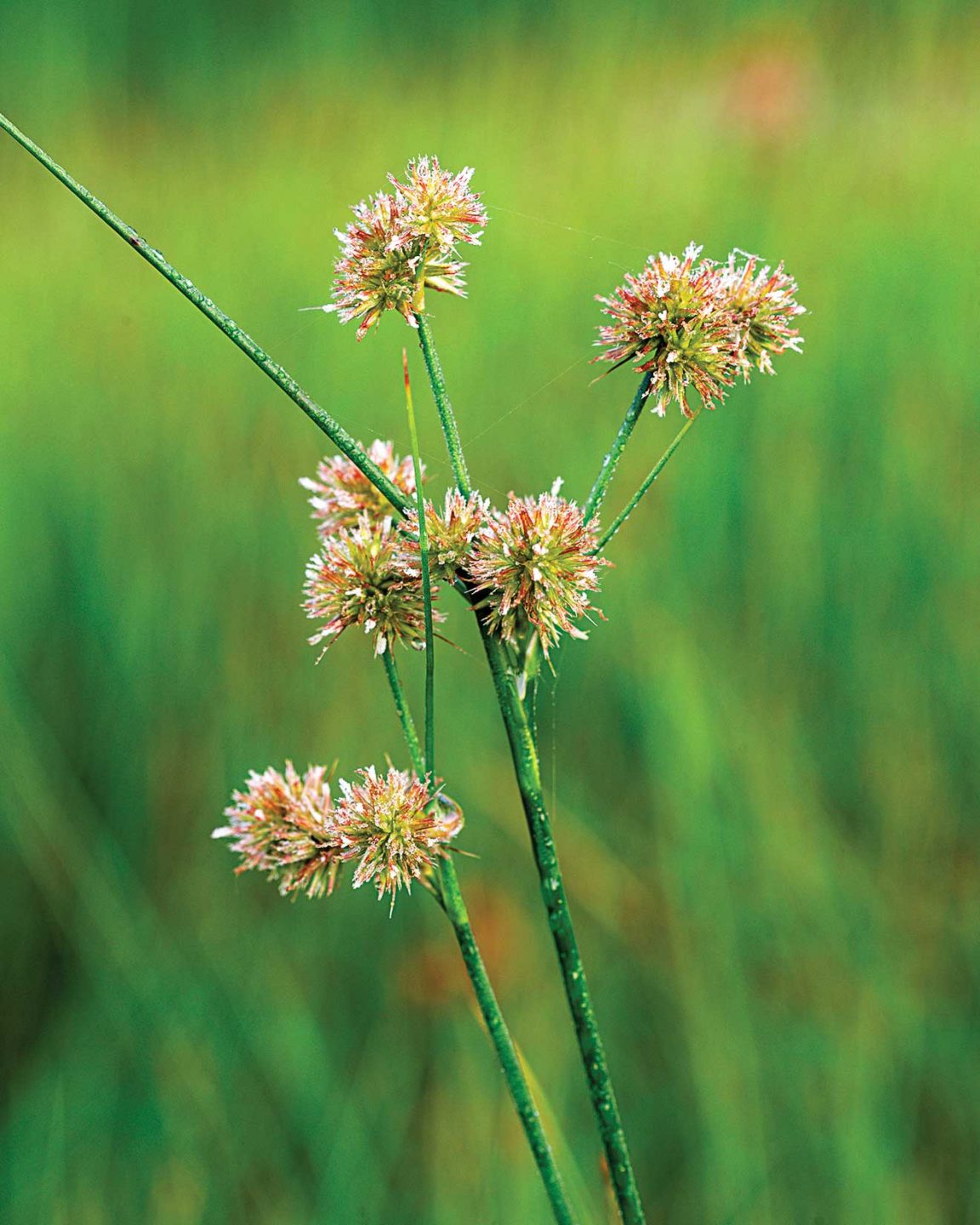
Nebraska’s Rush Diversity
Nebraska is home to 16 native and one non-native rush species. By comparison, the state has about 200 grass species and 75 sedge species. While all our rushes inhabit wetlands, some also grow in upland woodlands and prairies. A few, like joint-leaf rush and soft rush, have a limited range and are rare in Nebraska, while others, such as Baltic rush and interior rush, are widespread and common.
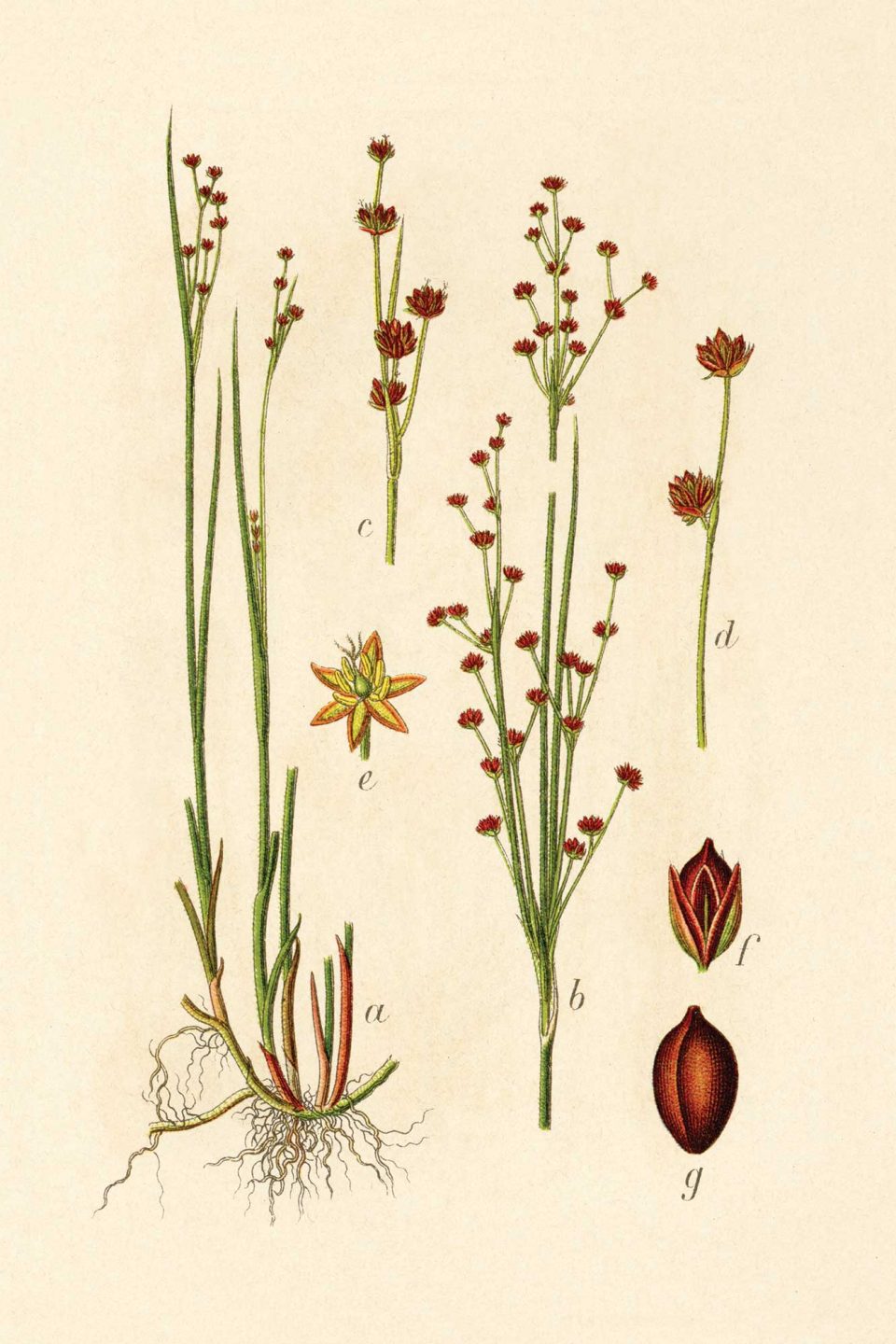
Rushes play vital ecological roles in wetlands. For example, the three species I photographed at Red Wing WMA — knotted, toad and Torrey’s rush — colonize sandbars and other disturbed wetlands, where their fibrous roots stabilize the soil and prevent erosion. As their roots and stems decompose, they contribute organic matter, enriching the soil and aiding the establishment of other plant species.
Eventually, the rush colonies I photographed at Red Wing will decline as the sandbars transition to other plant communities. In the meantime, they will scatter countless seeds across the sand. When the next flood arrives, these seeds will be carried away, hopefully settling on moist sandbars to begin the eternal cycle anew.
